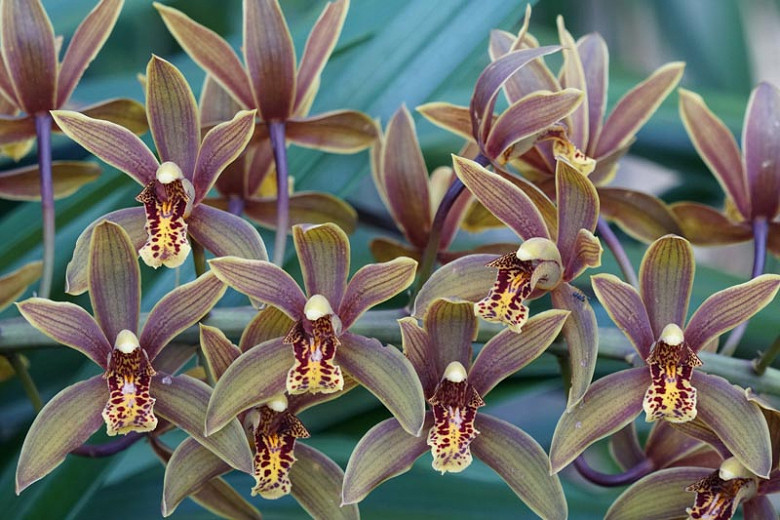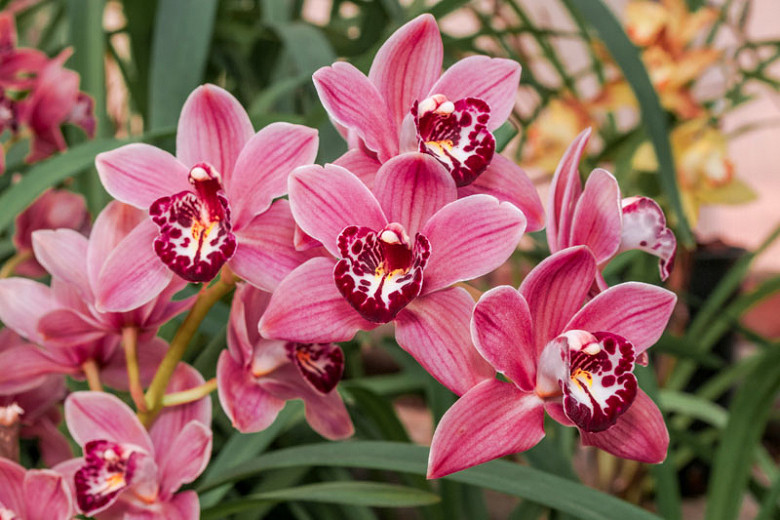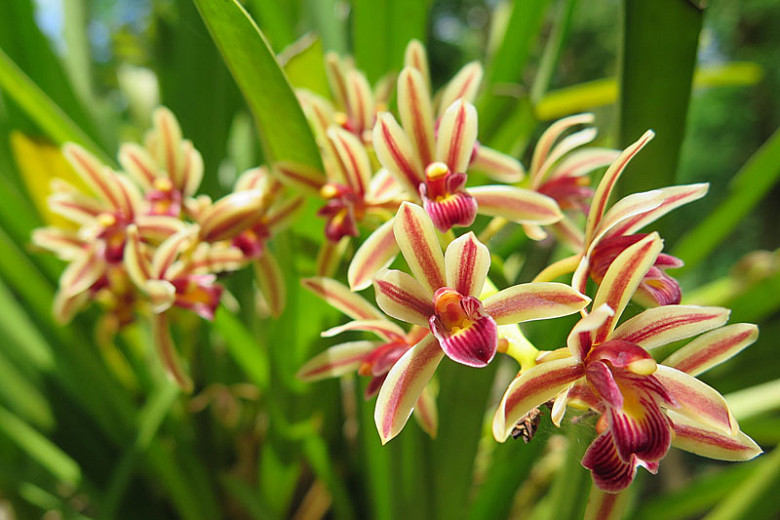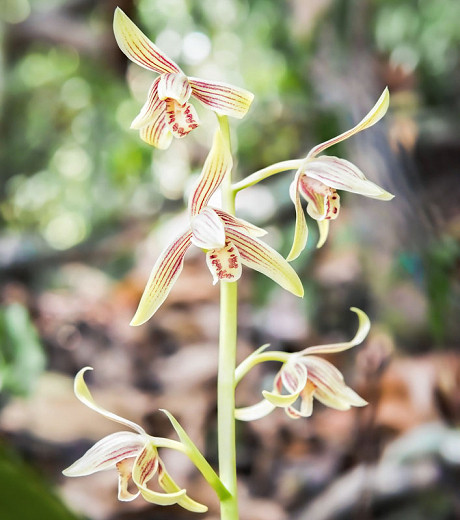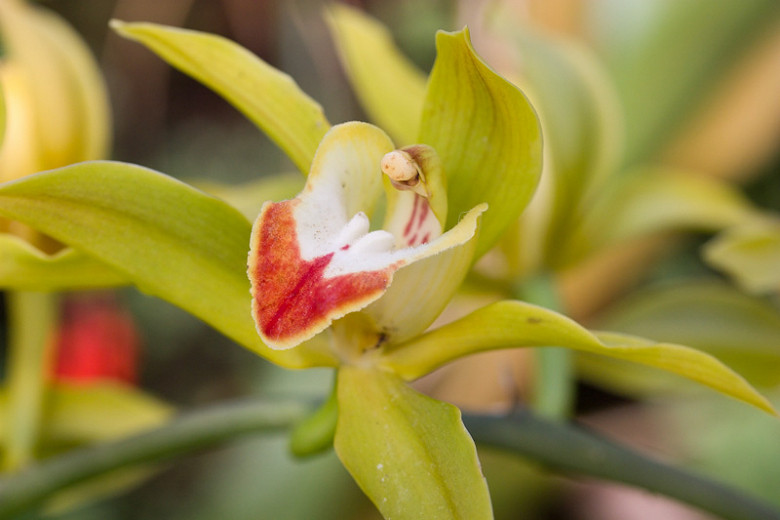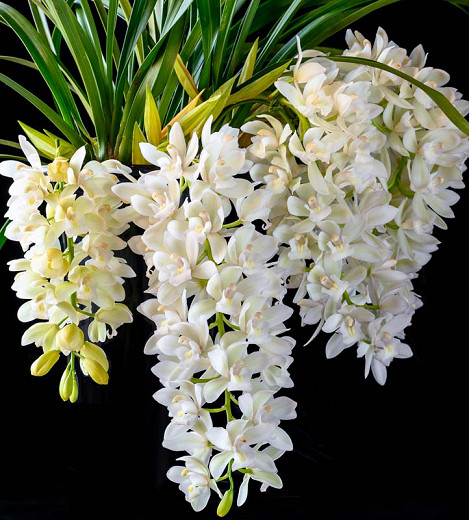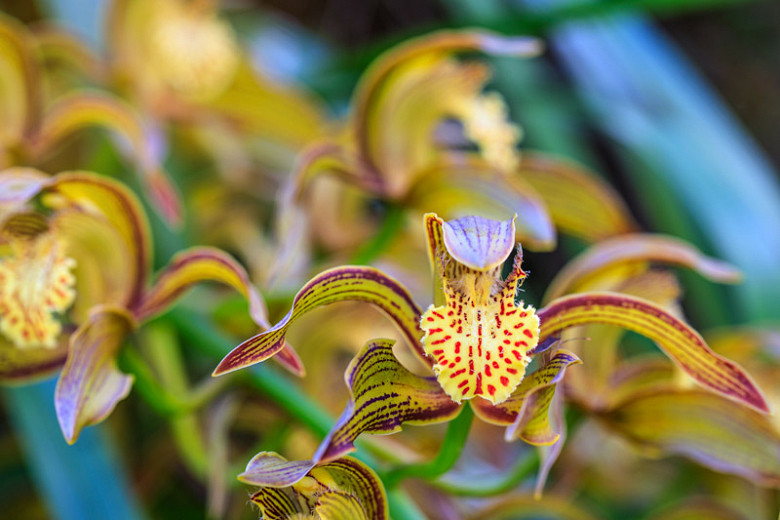Cymbidium floribundum (Golden Margin Orchid)
Cymbidium floribundum (Golden Margin Orchid) is a small terrestrial, lithophytic or epiphytic orchid species boasting 6-10 in. (15-25 cm) erect inflorescences studded with up to 10-40 usually not scented flowers. Blooming in the spring, the closely spaced blossoms, 1-1.5 in. across (2-4 cm), feature reddish brown or occasionally greenish yellow sepals and petals and a white lip adorned with red spots. The slightly bilaterally flattened pseudobulbs carry linear, leathery leaves, 12-18 in. long (30-45 cm). Native to China, Taiwan, Tibet, and Vietnam, Cymbidium floribundum prefers cool to cold conditions for optimum growth. It is found in broadleaf, evergreen forests in shaded gorges and ridge tops at elevations of 1300-10800 ft. (400-3300 m). A most desirable and appealing orchid, Cymbidium floribundum has been used in hybridization to produce many miniature cymbidiums.
- Grows up to 6-10 in. tall (15-25 cm).
- Grows in orchid compost in bright light with light shade during the middle of the day. Provide good air circulation.
- Needs a minimum night temperature of 45-55°F (7-13°C) and a daytime temperature of 64-75°F (18-24°C). A cooling period (2-4months) in late summer and early fall is required to initiate flowering.
- Maintain adequate humidity (40-60%). In the home, placing the plant in a tray of damp pebbles is ideal.
- Water heavily during the growing season, making sure the potting material never gets soggy. Reduce water when the pseudobulbs complete growing in late summer. Reduce water during the 2-3 winter months.
- During the growing season, feed with high-nitrogen orchid fertilizer. When flower spikes initiate, use a high-phosphorus fertilizer to assist in the formation of flower spikes. Fertilization should be reduced or eliminated until new growths appear in spring, at which point regular watering should resume.
- Propagate by division of pseudobulbs when pot-bound.
- Once the flowers have faded, remove the spent flower spikes.
- Repotting is usually done in the spring after flowering, every two years, or when the potting medium decomposes. Choose a water-retentive potting mix. Medium-grade fir bark with peat moss and perlite is a common mix. Select a pot that will allow for at least 2-3 years of pseudobulb growth before crowding the pot. Keep shaded and warm until new growth sprouts.
- Generally disease free. Keep an eye out for aphids, glasshouse red spider mites, and mealybugs.
- Native to China, Taiwan, Tibet, and Vietnam.
Tips for reblooming
- Make sure that your Cymbidium is receiving at least 12 hours of filtered sunlight or UV rays daily, especially during spring, summer, and fall months. If the leaves are bright green or too dark, your plant is not getting enough light for blooming. Leaves should be medium to golden green in color, not dark green.
- Moderate and regular watering and adequate fertilization are important in triggering your cymbidium orchids to bloom.
- Cymbidiums need a day-night temperature difference of at least 25°F (15°C) to bloom well. If you are growing your cymbidium outside, make sure you regularly remove all fallen leaves and debris that accumulate on the orchid and in the pot. This will avoid them to decompose and cover your emerging flower spikes and rot them out.
Requirements
| Hardiness | 10 – 12 |
|---|---|
| Plant Type | Orchids |
| Plant Family | Cymbidium – Boat Orchids |
| Exposure | Partial Sun |
| Season of Interest | Spring (Early,Mid,Late) |
| Height | 6" – 10" (15cm – 25cm) |
| Water Needs | Average |
| Maintenance | Average |
| Soil Drainage | Well-Drained |
| Characteristics | Showy, Evergreen |
| Garden Uses | Patio and Containers |
